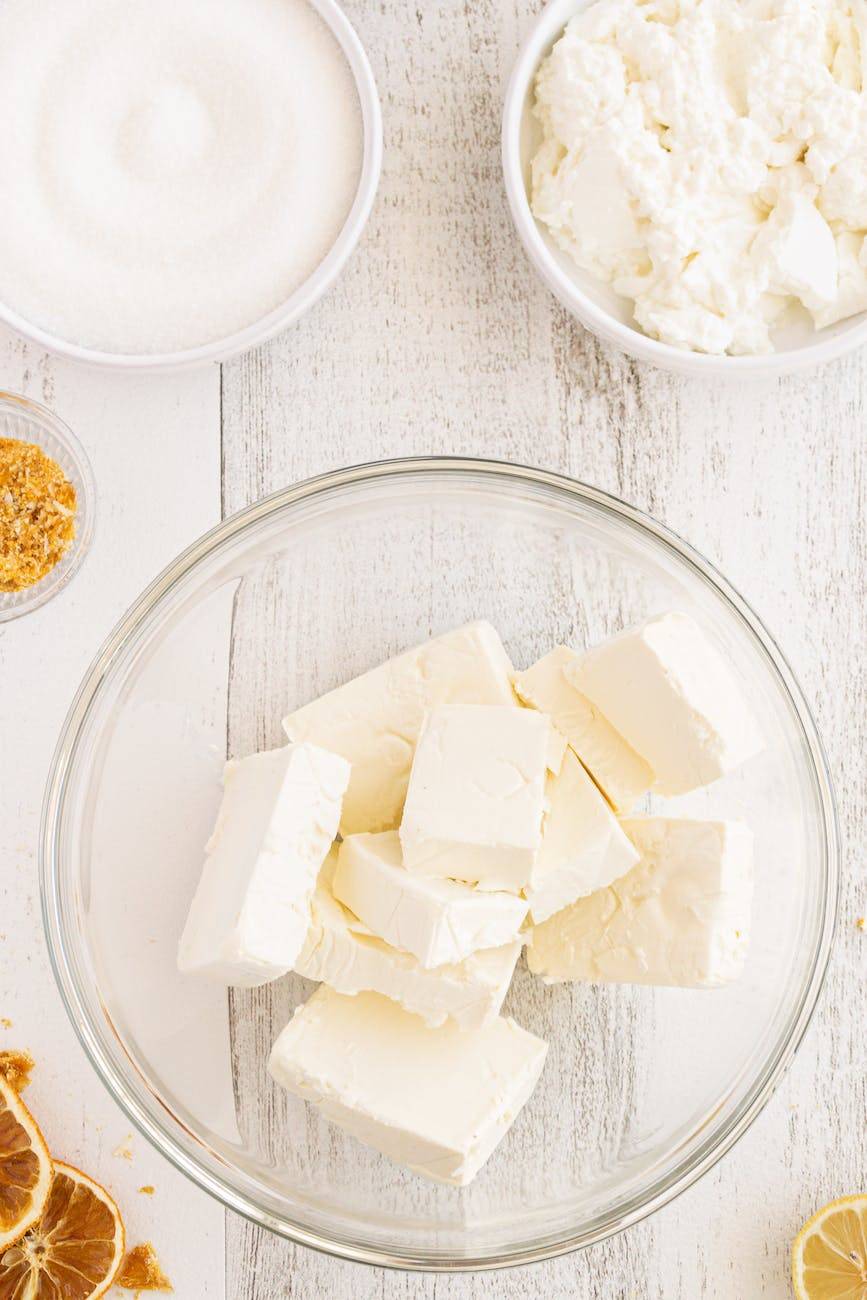Understanding Bulgarian Cheese
Bulgarian cheese holds a significant position in the culinary traditions of Southeastern Europe, sharing characteristics with Greek, Turkish, and Middle Eastern cuisines (Wikipedia).
The Role of Cheese in Bulgarian Cuisine
Cheese, including the distinct Bulgarian cheese, is a prominent ingredient in Bulgarian cuisine, highly valued for its rich and distinct flavors. It is commonplace to see Bulgarian cheese utilized in traditional dishes such as Banitsa (a pastry with cheese filling) and Shopska salad (a fresh vegetable salad topped with grated cheese) (Wikipedia). Aside from these dishes, Bulgarian cheese also features as a main component in many other recipes, reinforcing its integral role in the culinary traditions of Bulgaria.
Types and Characteristics of Bulgarian Cheese
Bulgarian cheese is typically crafted from sheep’s milk, but it can also be made from cow’s milk or a mixture of both (Wikipedia). The specific type of milk used can significantly influence the flavor and texture of the cheese, allowing for a wide range of variations.
There are several popular types of Bulgarian cheese, each with its own unique taste and texture. Some of these include:
-
Sirene: Also known as Bulgarian feta, Sirene is a traditional Bulgarian cheese that’s often compared to Greek feta. However, it boasts a creamier texture and a milder, sweeter flavor. Sirene is a brined cheese made from sheep’s milk or a mixture of sheep’s and goat’s milk (Cheesemaking.com).
-
Kashkaval: This is another popular variety of Bulgarian cheese. Kashkaval is a yellow semi-hard cheese made from sheep’s milk or cow’s milk.
-
White Brined Cheese: This type of Bulgarian cheese, often referred to as Bulgarian white cheese, is a soft, wet cheese stored in a brine solution. It has a soft, creamy texture and a tangy, slightly salty flavor.
The traditional method of making Bulgarian cheese involves curdling the milk with rennet and then aging it in a brine solution for several weeks (Cheesemaking.com). This process, along with the type of milk used, greatly influences the final taste, texture, and aroma of the cheese, making each variety of Bulgarian cheese truly unique. Whether one is a culinary enthusiast or simply a cheese lover, exploring the different varieties of Bulgarian cheese offers a delightful journey into Bulgaria’s rich culinary heritage.
The Making of Bulgarian Cheese
The process of making Bulgarian cheese, notably Sirene and Kashkaval, is a time-honored tradition that contributes to the unique taste and texture of these beloved dairy products.
Traditional Method of Cheese Making
The production of Bulgarian cheese typically begins with either sheep’s milk, cow’s milk, or a mixture of both (Wikipedia). The traditional method of making Bulgarian cheese involves curdling the milk with rennet, a complex set of enzymes that induce coagulation.
Once the milk has curdled, the curd is cut into small pieces, which allows the whey to separate. The curd is then pressed to remove any remaining whey and form the cheese.
The cheese is then aged in a brine solution for several weeks. This brining process gives Bulgarian cheese its distinctive tangy flavor and helps to preserve the cheese. The duration of aging can vary, with longer aging periods resulting in a stronger, more pronounced flavor.
The Art of Making Sirene and Kashkaval
Sirene and Kashkaval are two popular types of Bulgarian cheese, each with its own unique taste and texture.
Sirene, also known as Bulgarian feta, is a white brined cheese typically made from sheep’s or goat’s milk. It is known for its tangy flavor and crumbly texture, making it an ideal addition to salads, pastries, and sandwiches.
On the other hand, Kashkaval is a yellow cheese made from cow’s milk or sheep’s milk. It has a semi-hard texture and a slightly pungent flavor. Kashkaval is often used in cooking and can be grilled, fried, or eaten as is.
The process of making these cheeses is an art form that has been refined over centuries. It involves a precise balance of ingredients, temperature control, and aging to create the characteristic flavors and textures of Bulgarian cheese.
Understanding the process of making Bulgarian cheese gives us a greater appreciation of its unique characteristics and the role it plays in Bulgarian cuisine. Whether you’re enjoying a slice of Sirene on a fresh Shopska salad or melting Kashkaval in a savory pastry, you’re experiencing a piece of Bulgaria’s rich culinary tradition.
For those interested in buying Bulgarian cheese or incorporating it into meals, you can explore our articles on where to buy Bulgarian feta and traditional Bulgarian dishes.
Where to Buy Bulgarian Cheese
Bulgarian cheese, known for its high quality, rich and creamy texture, and its tangy and slightly salty taste, has gained international recognition and is exported to many countries around the world (Kashkaval Tourist). Given its popularity, it’s important to know where to find this delectable dairy product.
Buying Bulgarian Cheese Locally
Buying Bulgarian cheese locally is an ideal choice if there are stores near you that carry this specific cheese. High-end supermarkets and specialty food stores often have a variety of international cheeses, including Bulgarian cheese. You can usually find Bulgarian cheese in the international or specialty cheese section.
Locally, you can often find varieties such as Bulgarian feta, Bulgarian sheep cheese, and Bulgarian white cheese. Be sure to ask a store associate if you’re having trouble finding it, as they may be able to direct you to the right section or possibly special order it for you.
Online Options for Bulgarian Cheese
If you’re unable to find Bulgarian cheese in local stores, online shopping is a great alternative. There’s a wide variety of online retailers that offer Bulgarian cheese and even deliver it right to your doorstep.
The advantage of buying Bulgarian cheese online is the convenience and the wider range of options. Online retailers often carry a larger variety of Bulgarian cheese than local stores. They may offer types of Bulgarian cheese that are hard to find locally, such as Bulgarian sheep’s milk cheese or Bulgarian white brined cheese.
When buying Bulgarian cheese online, be sure to check the product details and reviews. This will give you an idea of the product’s quality and taste. Also, consider the shipping and handling fees, as these can add to the overall cost.
Whether you’re buying Bulgarian cheese locally or online, it’s important to remember that the taste and texture can vary depending on the type of milk used (cow or sheep) and the specific preparation methods. So, don’t be afraid to try different varieties to find your favorite type of Bulgarian cheese.
For more information on where to buy Bulgarian feta, check out our article where to buy Bulgarian feta.
Incorporating Bulgarian Cheese in Meals
Bulgarian cheese is a versatile ingredient that can be used in a variety of dishes, both traditional and modern. Its unique flavor and texture make it a delightful addition to many recipes.
Traditional Bulgarian Dishes with Cheese
Bulgarian cheese plays a significant role in traditional Bulgarian cuisine. One of the most popular uses of Bulgarian cheese, especially Sirene, is in Banitsa, a pastry with cheese filling. This dish showcases the cheese’s crumbly texture and tangy flavor, making it a favorite among locals and tourists alike (Wikipedia).
Another traditional dish featuring Bulgarian cheese is the Shopska salad. This fresh vegetable salad is typically topped with grated Sirene, adding a salty twist to the mix of tomatoes, cucumbers, onions, and peppers (Wikipedia).
In addition to these dishes, Bulgarians enjoy cheese with almost every meal, including on slices of bread, in salty pastries, with scrambled eggs, and in salads (The Culture Trip).
Modern Uses of Bulgarian Cheese
While traditional Bulgarian dishes offer a taste of the country’s rich culinary heritage, Bulgarian cheese can also be incorporated into modern recipes. Its salty, tangy flavor can add a unique twist to pizzas, sandwiches, pastas, and more.
Bulgarian cheese can be used as a substitute for other types of cheese in many recipes. For instance, Sirene’s crumbly texture makes it an excellent alternative to feta in Greek salads or to ricotta in Italian pasta dishes.
Furthermore, with the growing trend of fusion cuisine, Bulgarian cheese is being used in innovative ways to create new, exciting flavors. For instance, it can be added to Asian stir-fries or Mexican enchiladas for a unique fusion dish.
Whether you’re a fan of traditional Bulgarian cuisine or love experimenting with flavors, Bulgarian cheese offers a wealth of possibilities. From the beloved Banitsa to fusion creations, Bulgarian cheese can elevate your meals to new culinary heights. If you’re looking to buy Bulgarian cheese, check out our guide on where to buy Bulgarian feta.
Bulgarian Cheese Versus Other Cheeses
Understanding the differences and similarities between Bulgarian cheese and other cheeses is crucial for cheese enthusiasts and culinary adventurers. This section will explore how Bulgarian Sirene compares to Feta and how Bulgarian cheese stacks up against other international cheese varieties.
Comparing Bulgarian Sirene and Feta
Bulgarian cheese, also known as “sirene,” shares several characteristics with the well-known and universally loved feta cheese. However, there are key differences that set these two cheeses apart.
Sirene is a traditional Bulgarian cheese made from sheep’s milk or a mixture of sheep’s and goat’s milk (Cheesemaking.com). This cheese is brined and has a creamy texture and a milder, sweeter flavor compared to feta. On the other hand, feta cheese is typically tangier and saltier.
Bulgarian sirene, or Bulgarian feta, is a salty firm cheese with a grainy structure. While it is usually made from cow’s milk, versions made from sheep, goat, and buffalo milk also exist. This cheese is a staple in traditional pastries, vegetable stews, salads, and is a key ingredient in the national Shopska salad.
Similarities and Differences with Other Cheeses
When comparing Bulgarian cheese with other international cheeses, it’s worth noting that Bulgarian Sirene shares similarities with several varieties due to the cheese-making process and the type of milk used. However, the unique taste profile of Bulgarian cheese sets it apart.
For instance, Bulgarian Sirene, made from sheep’s or goat’s milk, may remind some of the Greek Feta or the French Chevre due to the shared use of goat or sheep milk in their production. However, the brining process and specific aging methods used in Bulgaria lend Bulgarian cheese a unique flavor profile that is hard to find in other cheeses.
Moreover, the versatility of Bulgarian cheese, particularly its ability to be used in a variety of dishes from salads to pastries, makes it a distinct choice for those looking to explore international cheeses. If you’re interested in trying out Bulgarian cheese for yourself, be sure to check out our guide on where to buy Bulgarian feta.
In conclusion, while Bulgarian cheese shares some similarities with other cheeses, its unique production process and flavor profile make it a distinct culinary experience. Whether you’re a fan of feta or a cheese connoisseur looking to expand your palate, Bulgarian cheese is a must-try.
Health Benefits and Nutritional Value
Bulgarian cheese is not only delicious but also packed with nutritional value. Understanding the nutritional content and health benefits of Bulgarian cheese can help cheese lovers and culinary enthusiasts make informed decisions about incorporating it into their meals.
Nutritional Content of Bulgarian Cheese
Bulgarian cheese is known for its rich and creamy texture, as well as its tangy and slightly salty taste. It comes in several varieties, each with its unique nutritional profile.
Sirene
Sirene, one of the most popular types of Bulgarian cheese, is made from sheep’s milk or a combination of sheep’s and cow’s milk. It has a crumbly texture and a salty, tangy flavor. Sirene is high in protein, calcium, and vitamins A and D, which are essential for bone health and overall wellbeing.
Kashkaval
Kashkaval is another widely consumed Bulgarian cheese. This semi-hard cheese is made from cow’s milk and has a mild, slightly nutty flavor. Like Sirene, Kashkaval is also high in protein and calcium. It additionally provides a good amount of vitamin B12, which is crucial for brain function and energy production.
Bulgarian White Brine Cheese
Bulgarian white brine cheese, also known as “sirenje,” is a traditional cheese made from sheep’s or goat’s milk. It is creamy, slightly tangy, and packed with nutrients. This cheese is rich in protein and calcium, and it’s also a good source of healthy fats.
Health Benefits of Consuming Bulgarian Cheese
Incorporating Bulgarian cheese into your diet can provide a range of health benefits due to its nutritional content.
-
Protein: Bulgarian cheese is a good source of protein, which is essential for building and repairing tissues in the body.
-
Calcium: Bulgarian cheese is high in calcium, which is crucial for bone health, muscle function, and nerve transmission.
-
Vitamin A: This vitamin, found in Bulgarian cheese, is essential for maintaining healthy vision and supporting the immune system.
-
Vitamin D: Some Bulgarian cheeses contain vitamin D, which works with calcium to keep bones strong and healthy.
-
Vitamin B12: Present in Bulgarian cheese like Kashkaval, Vitamin B12 is crucial for brain function and energy production.
Enjoying Bulgarian cheese in moderation as part of a balanced diet can contribute to a healthy lifestyle. Whether you enjoy it on its own, in a salad, or melted in a sandwich, this flavorful cheese adds a touch of Bulgarian culinary tradition to your meals. Be sure to check out our articles on where to buy Bulgarian feta and other types of Bulgarian cheese near you.




Leave a Reply